The shamrock plant is an appealing houseplant that will add to your indoor décor with its lovely green leaves and delicate flowers.
Oxalis plants are easy to grow and require minimal care. They thrive in full sun and average soil conditions. Oxalis plants are drought tolerant and can survive in poor soil.
Although identified with the Irish shamrock symbol, this plant is actually a native of Brazil.
This guide will teach you how to care for and grow shamrock plants indoors and outdoors.
Shamrock Plant Overview
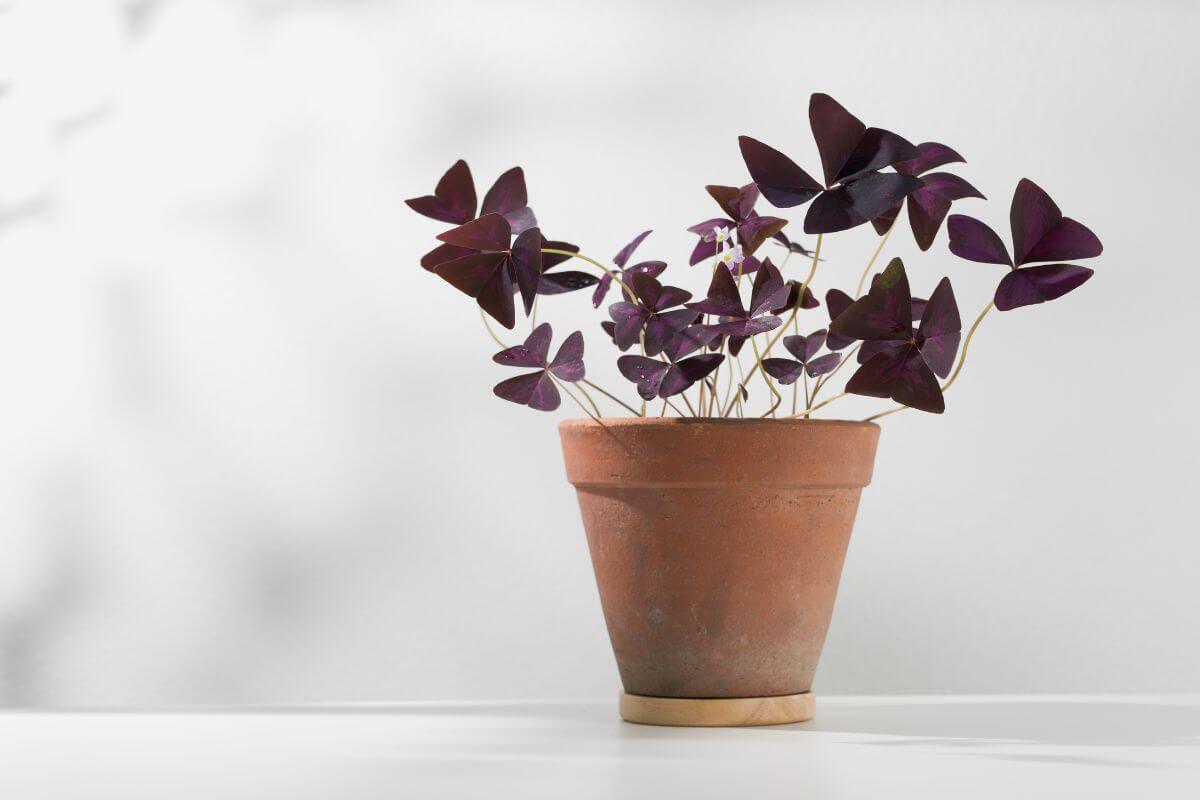
Botanically known as the Oxalis regenellii, and a member of the Oxalidaceae family, the Shamrock Plant is a smallish perennial plant that generally will not grow more than six inches.
Clover-shaped leaves come in various green and purple shades, and the plant produces delicate blooms in white or pink during the fall. As clovers are thought to bring good luck, the shamrock plant is thought to be lucky too.
The shamrock’s leaves will fold up when sundown arrives and reopen with the sunrise.
Other names for the Shamrock plant include:
- Purple Shamrock
- False Shamrock
- Love plant
- Shamrock
- Wood Sorrel
- Oxalis
- Black oxalis
The name “False Shamrock” is attributed to the fact that it has been sold as true shamrock or clover (Trifolium spp.) that is native to Ireland. But it’s actually a member of the Wood Sorrel family.
Other differences between the two, authentic and false, include a difference in the root systems. Real clover is fibrous, while false is a bulb. Real clover is difficult to grow indoors due to insufficient light. True shamrocks are annuals, while the False Shamrock is a perennial.
There are various Shamrock Plant varieties, including:
- Oxalis acetosella – Commonly called Shamrock or Wood Sorrel. This plant features heart-shaped leaves that grow in groups of three and are bright green.
- Oxalis adenophylla – Known as the Chilean Silver Shamrock. The silvery green leaves and pink flowers with purple centers are recognizable traits.
- Oxalis bowiei – Otherwise known as the Cape Shamrock, Red Flower Wood Sorrel, or Bowie’s Wood Sorrel. It features rose or reddish-purple flowers.
- Oxalis lasiandra – Known as the Mexican Shamrock or as the Palm Tree Oxalis. This particular variety can grow to a foot tall and will flower with pink or crimson blooms.
- Oxalis tetraphylla – Called the Four-Leaved Sorrel or the Lucky Clover because it is characterized by four split leaves. Foliage is green with a center that’s maroon.
- Oxalis triangularis – Another botanical name for the oxalis regenellii.
Shamrock Plant Care Guide
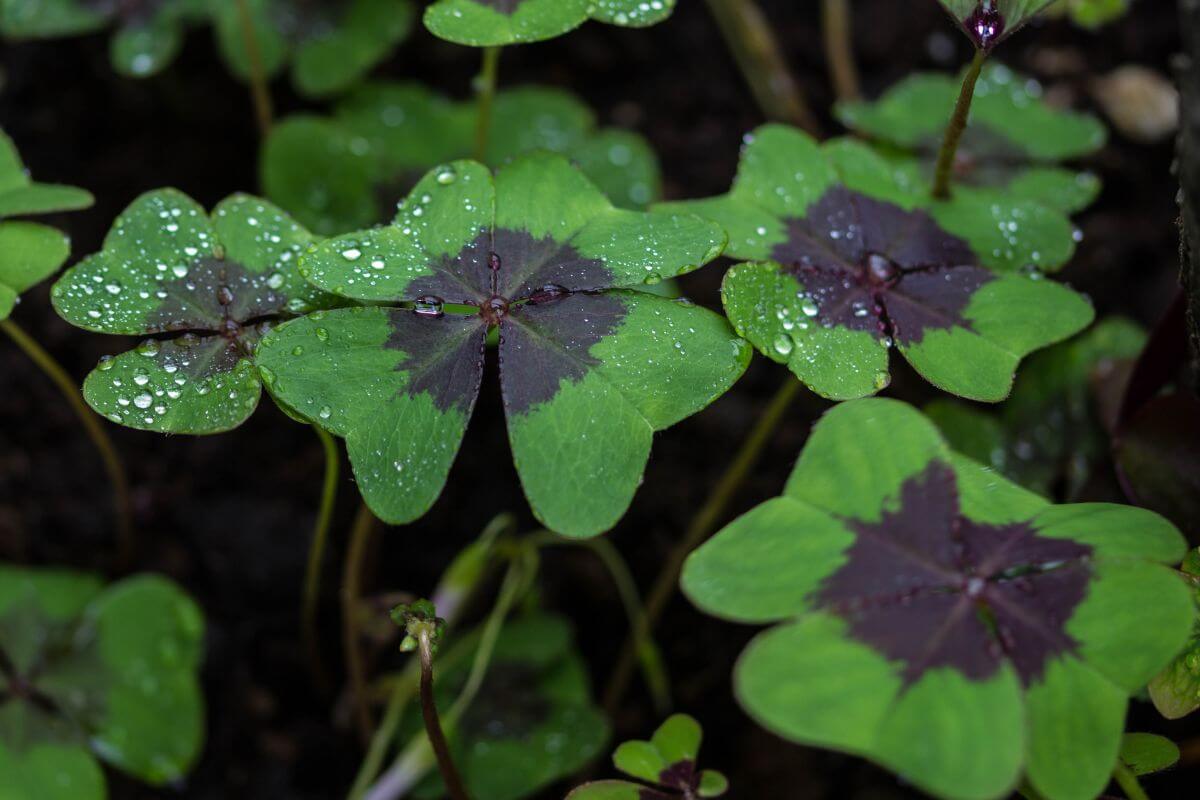
Growing this plant is relatively simple. It is important to be aware of their dormancy periods. Unlike other plants, they go dormant in the summer. When its leaves die back, it will require darkness for rest with reduced watering and no fertilization.
Its period of dormancy can last anywhere from several weeks to three months, depending on the cultivar and the environmental conditions.
During dormancy, the shamrock’s foliage will degrade, and you may think your plant is dead. When you see this, reduce watering and interrupt fertilization. Wait until you see new growth to resume normal care.
When the plant reawakens, new growth shoots will appear. Once awake, the shamrock should be moved into bright light.
When the new shoots appear at the beginning of autumn, you can begin to water your shamrock plant, keeping the soil bed lightly moist while growing. Shamrocks should be watered approximately two to three times monthly, allowing the soil bed to dry out between waterings.
These pants are cultivated from small bulbs that should be planted in the early spring or in the fall. There are many varied cultivars available, but you should look for one that does well as an indoor houseplant.
Soil for the Shamrock Plant
The most important consideration for the successful nurturing of your shamrock is a well-draining soil bed. It can thrive in various types of potting soil mix, but drainage is a must.
A soil bed that is loamy or a bit sandy will work best because soggy soil will lead to root rot. Any well-draining potting soil mixture will suffice.
If you wish to create your own potting mix, blend one-third potting mix with one-third potting soil and one-third peat.
Light for the Shamrock Plant
The shamrock plant will thrive in full direct sunlight to partial shade. If you are growing it outdoors in your garden, partial shade is recommended to protect it from harmful afternoon sun rays.
Inside your home, the shamrock should be positioned near a sunny window. You will need to occasionally rotate your plant so that it receives bright light evenly.
If the shamrock plant does not receive sufficient light, it will grow leggy and weaken.
Water and Humidity for the Shamrock Plant
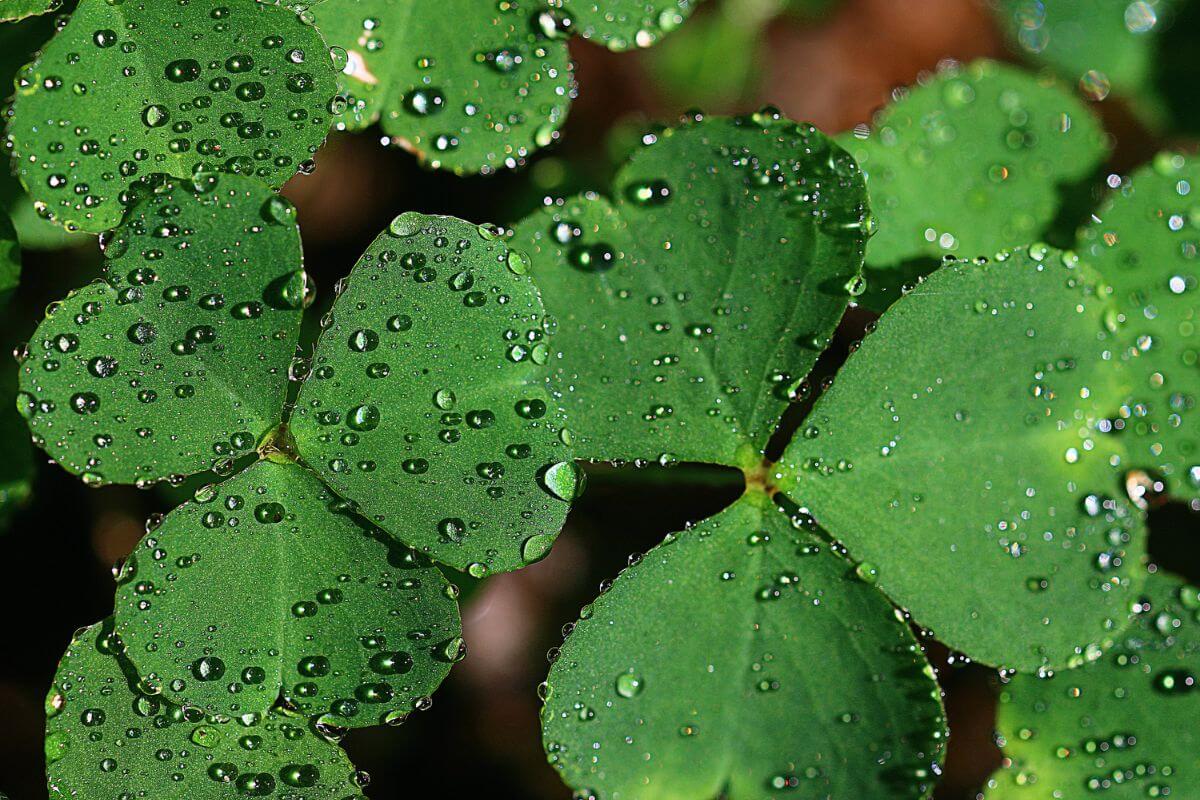
Your objective will be to maintain an even amount of soil moisture. This will be especially true for young shamrock plants. Mature plants have a slight tolerance for drought and will forgive you if you forget to water them occasionally.
During the shamrock’s growing season, it should be watered as soon as the top inch of the soil bed is dry.
During its dormant period, you can water your plant bi-weekly or even every three weeks, so that the soil bed does not dry out completely.
These plants like moderate humidity, which is the normal home humidity levels. If you live in a particularly dry climate, consider getting a humidifier to increase humidity in the room.
Temperature for the Shamrock Plant
Shamrock plants will thrive in a temperature range from 60° to 75° Fahrenheit. This makes them an ideal indoor plant for rooms with average temperatures.
If nighttime temperatures dip to 50°F, your plant will still be okay. Dormancy can be instigated when temperatures go above 80°F.
These plants need to be protected from cold drafts near windows, doors, or hallways. They also need to be protected from both heating sources and vents, as well as air conditioning units. These elements can damage the plant’s foliage.
For residents in areas with mild climates, the shamrock plant can be grown outdoors all year-round and is often employed as a ground cover. If you live in a colder climate, bulbs can be dug up and stored indoors until the spring.
Fertilization for the Shamrock Plant
Fertilization should take place during this plant’s growing season. You can use fertilizer types like a liquid fertilizer or slow-release fertilizer pellets. A balanced houseplant food will be good every few months.
For houseplants, liquid fertilizer is ideal. To encourage your plant, a bit of compost can be mixed into the soil.
Fertilizers can cause salt build-up in the soil. Foliage can be burned, so periodic flushing of the soil is advised every four to six months.
Take the plant to your sink, run the water for about five minutes and allow it to drain.
Pruning and Repotting the Shamrock Plant
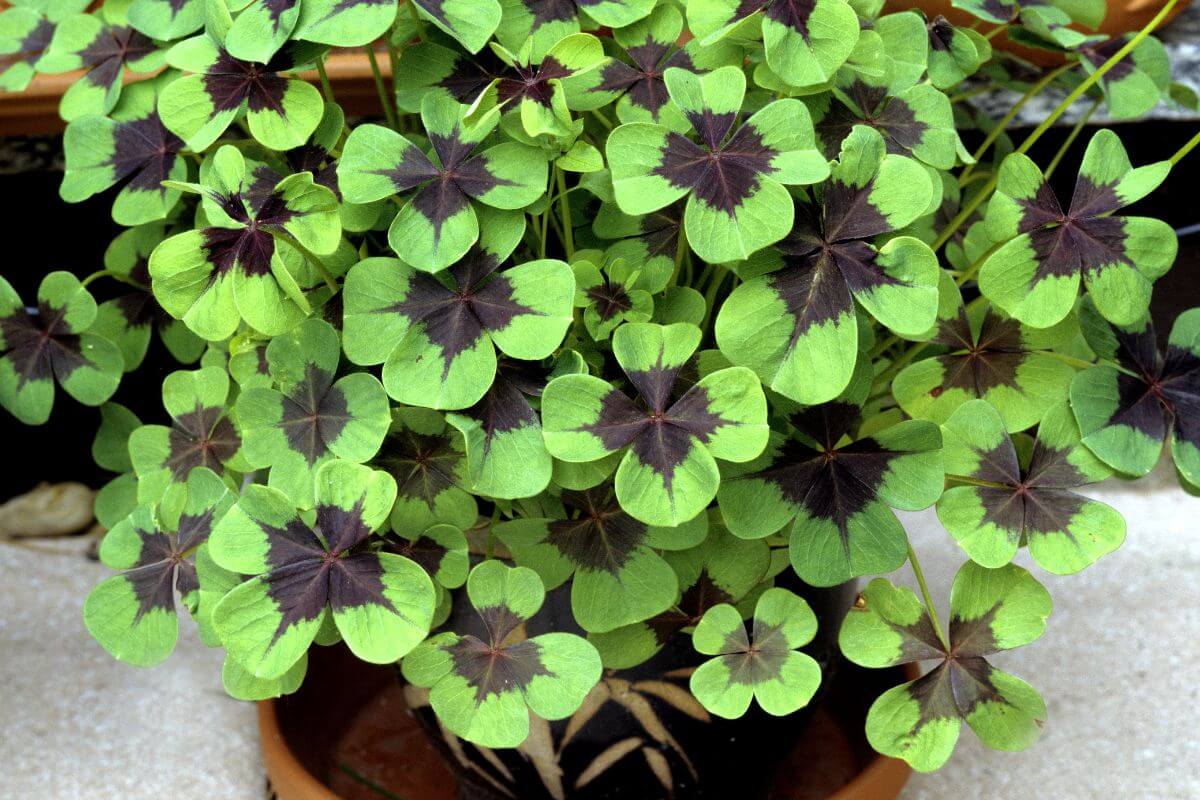
To prune, pinch off any dead foliage, especially at the beginning of the dormancy period.
Repotting your Shamrock plant should be done every one to two years during the plant’s dormancy period. You can use the same container or move up one size if the roots have grown.
If you divide the plant from new offsets, you can reuse the same container because the size will remain the same.
Propagating the Shamrock Plant
Propagation of a shamrock plant can be done after your plant is two weeks into its dormancy period.
You will need to remove the bulb from the soil bed and remove the small bulb offsets. Each individual bulb offset can be replanted in its own container for new plants.
The new plantlets will emerge later than the mother plant at the end of the dormancy period.
Shamrock Plant Toxicity and Pets
According to the ASPCA (American Society for the Prevention of Cruelty to Animals), the shamrock Plant is toxic for dogs, cats, and horses as it contains soluble calcium oxalates.
The most poisonous part of the plant is the bulb, but all parts are toxic. This is true for humans as well.
Poisoning symptoms will include:
- Diarrhea
- Drooling and excessive salivation
- Gastro-intestinal pain
- Lethargy
- Tremors
- Vomiting
Normally, the plant has a very bitter taste, so this discourages ingestion in large quantities. Serious ingestion can lead to kidney failure.
If you suspect your pet or a small child has ingested this plant, contact your local poison control center, your doctor, or your veterinarian immediately.
Shamrock Plant Pests, Diseases, and Problems
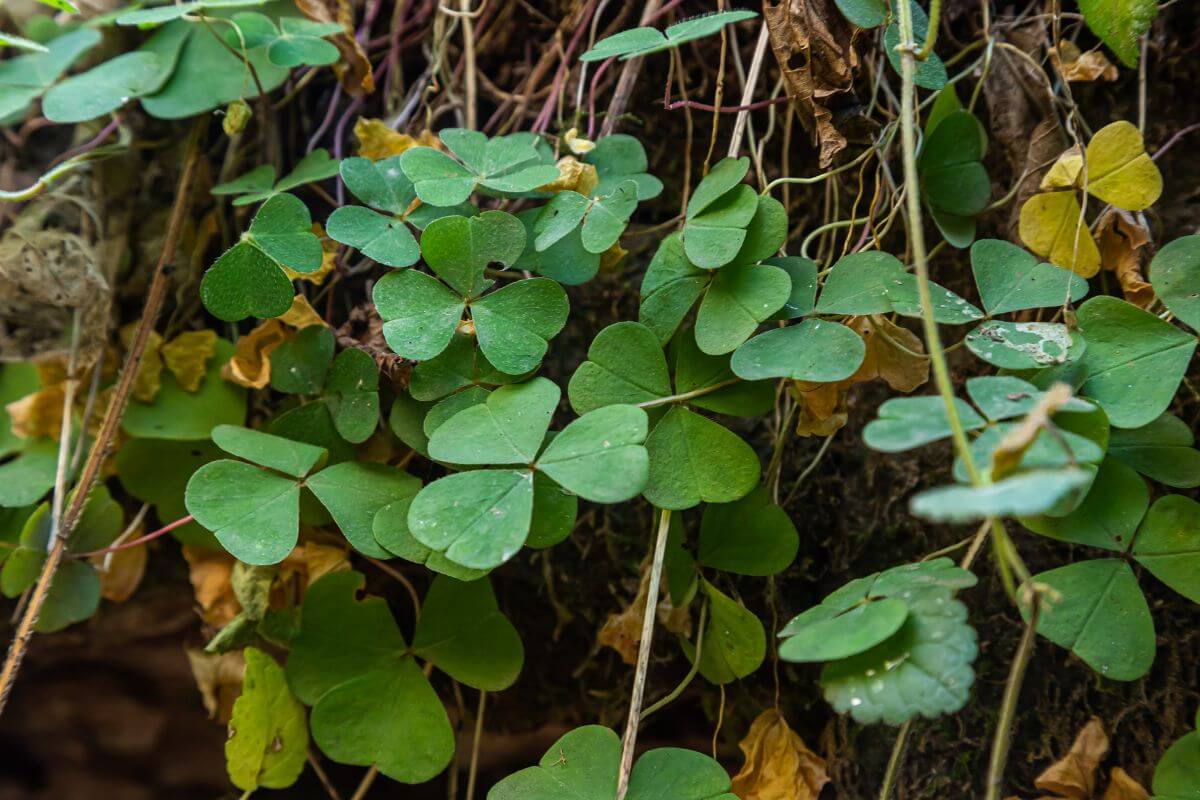
These plants do not appear to be at risk for serious plant diseases, but overwatering and soggy soil can lead to root rot.
You’ll recognize root rot when the plant’s bulbs turn black and become mushy. The plant will die.
These plants can also be susceptible to rust and powdery mildew, which are fungal infections. They can be triggered if temperatures cool down, if there is excessive humidity, or insufficient light.
Powdery mildew will appear as a white powdery patch anywhere on the plant. Rust will appear as small, yellow spots on leaves with a white substance on the entire plant.
Often it will be sufficient to move the plant to a brighter spot, or you can spray with an organic fungicide.
Pest threats come from the mealybug and spider mite. Either infestation should be treated with insecticidal soap or neem oil.
Shamrock Plant Care Final Thoughts
The shamrock plant is a stunning stand-out plant for any home garden, whether indoors or outdoors. It has a distinctive appearance and dark purple hue.
Hopefully, it will also bring a bit of luck together with beauty to your home.
For other lucky houseplants and more, check out these guides:
- Swiss Cheese Plant Care Guide
- Polka Dot Plant Care Guide
- Lucky Bamboo Plant Care Guide
- Pilea Plant Care Guide
Shamrock Plant Care FAQs
Is a shamrock plant indoor or outdoor?
The shamrock plant grows indoors and outdoors. They are usually grown indoors. If you live in colder climates, keep the plant inside until spring arrives. In warmer areas, you can grow the plant outdoors once the frost is gone.
Are shamrock plants annual or perennial?
Shamrock plants are perennials that bloom every year. The shamrock plant can act as an annual though when it goes dormant in the winter or when it’s not watered.
Why is my shamrock plant drooping?
The most common reason for a shamrock plant to droop is a lack of water. Other reasons include insufficient light, pest attacks, and dry soil. When this happens, the leaves may start turning brown or yellow as well.
Are shamrock plants easy to care for?
Yes, shamrock plants require little maintenance other than watering regularly during hot weather months. Give it lots of light by placing it by a sunny window. Little fertilizer is needed too. Balanced plant food every few months is all that’s needed.
How long do shamrock plants last?
Shamrock plants have been known to survive up to 20 years. However, they tend to lose their vigor after about 10 years. You might want to consider replacing them then. They will bloom for about 3 months and enter dormancy after. Dormant periods vary and can be anywhere from a few weeks up to three months. After the first couple of weeks of dormancy, you should check your plants weekly or biweekly. You’ll know it’s out of its dormancy period when new shoots show up.
Why do shamrock plant leaves close at night?
Shamrock plant leaves close at night because they need less sunlight while sleeping. This helps conserve energy, so they don’t use more resources than necessary.
Does the Purple Shamrock come back every year?
The purple shamrock comes back each year, but only for one season. Once the flowers fade away, the plant enters into dormancy. During dormancy, the plant stops growing and starts storing nutrients within itself. So, even though the plant looks dead, it still lives!
Is the Purple Shamrock poisonous to dogs?
Yes, the purple shamrock plant is poisonous to dogs and cats. Keep your pets away from the plant because the shamrock contains soluble calcium oxalates. Signs of poisoning could be drooling, vomiting, and diarrhea.
Will shamrock plants survive the winter?
Yes, shamrock plants will survive the cold winters if given enough time. Just make sure to give them plenty of sun exposure throughout the day. Also, place them near a south facing windowsill where there is ample warmth.
How often should I water my shamrock plant?
Shamrock plants should be watered daily during the summer. Watering twice per week is sufficient during fall and early winter. As soon as temperatures drop below freezing, stop watering altogether. It’s best to wait until spring before giving the plant any additional moisture.
What kind of soil does the shamrock plant like?
You can find that shamrock plants like different types of soils. Some prefer sandy loam, some prefer clay-loam, and others love peat moss. Choose what type of soil suits your needs best.
Do shamrock plants need lots of light?
Yes, shamrock plants need lots of light, but it can also thrive in partial shade. Place the shamrock plant next to a south-facing window for it to get enough light each day.



Hello beautiful souls! Life can be filled with difficulties, but every challenge is a growth chance. Embrace them and thrive!